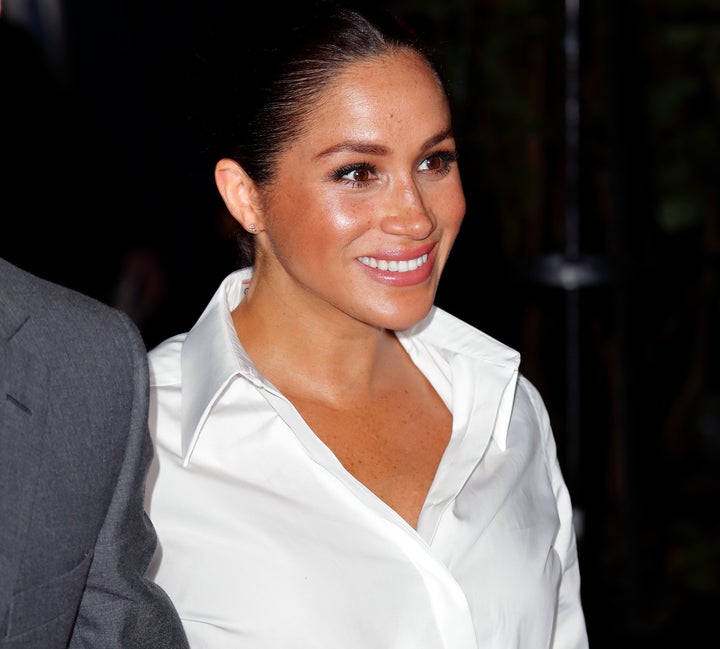
The Duke and Duchess of Sussex continue to make headlines after it was revealed they had apparently hired a doula to attend their birth. Since then, traditionalists have clutched at their pearls as Meghan breaks yet another tradition and article upon article has been published, both here and over in the States, questioning why on earth anyone would pay for the services of a “professional hand holder.” One well-known breakfast TV host exclaimed: “Isn’t that a husband’s job?”
Many of my friends and colleagues in the doula world have taken offence that their blood, sweat and tears have been reduced to something that sounds so trivial. And while I could certainly do without the scathing tone that’s dripping through all of this commentary, I’m here to say that we shouldn’t take offence: professional hand holding is exactly what we do. But it’s far more scientific than it sounds.
A Cochrane review of continuous support in labour found that having an experienced person at the birth, who wasn’t a medic, friend or family member improved women’s experiences. It found that women are 26% less likely to give birth by Caesarean, 41% less likely to give birth with a vacuum or forceps, 28% less likely to use anaesthesia and 33% less likely to be dissatisfied or negatively rate their birth experience. This in turn leads to less birth trauma, less post natal depression, happier mums and therefore happier families.
Why is this? How can the humble hand holder make so much difference? You’d be forgiven for thinking we’re magical, but the truth is, the answers are rooted in science.
To get to the bottom of the scientific power of “hand holding”, we first have to understand birth physiology and how it works. It’s the fundamental secret to birth; a scientific truth that is so simple and so natural, it seems to have been completely lost in our complicated, over-medicalised world.
Birth physiology, or to have a physiological birth, simply means a birth powered by the innate human capacity of the woman and foetus. A woman, along with every other female mammal on earth, has been biologically designed to give birth. Her body inherently knows how to do it, just as it knows how to breathe, sleep and swallow.
As labour begins, the woman releases an intense cocktail of hormones, which work to dilate the cervix through contractions, while producing natural pain relief in the form of oxytocin (the love hormone) and endorphins (natural morphine – think the “runner’s high”). In other words, she has everything she needs to birth her baby.
However, there’s another hormone at play: adrenaline. Adrenaline is the fear hormone; the fight or flight, the one that makes you feel like something’s wrong. Adrenaline exists in the neo-cortex, or thinking brain and is so powerful; it tends to over-ride oxytocin and endorphins, which are shy hormones, hidden away in our less accessible primitive brains. Adrenaline can stunt the progress of a birth and suddenly make the women feel out of control. This leads to panic, more pain, more unmanageability, which can lead to a cascade of interventions and potentially, a less satisfying birth.
Adrenaline, from an anthropological perspective, is an incredibly useful hormone. It sends a very clear warning to the birthing woman that the environment she’s in isn’t safe, and women have to feel safe to birth. Back in the prehistoric times, adrenaline would have been her signal to return home, out of the wild, to a warm, dark corner of her cave, where she could birth her baby in safety. However, we don’t live that way anymore and there’s no reason why adrenaline should interfere like this.
In her book, Positive Birth Movement founder, Millie Hill describes the doula as the guardian of oxytocin and in my experience, that’s pretty accurate. As doulas, we understand how this physiological process works. We know that a woman has to feel safe in order to promote oxytocin and endorphins and keep that pesky adrenaline at bay. And it’s our job to do whatever we can to achieve this.
This includes spending time with her antenatally to discuss her rights, choices, hopes and fears; attending any antenatal appointments she feels nervous about; being on the end of the phone to talk through any last minute wobbles and making sure her birthing partner feels comfortable and reassured too.
During labour, we create an environment that’s conducive to an oxytocin fuelled, adrenaline free, physiological birth. As it progresses, we talk through any changes that might be happening and decision that need to be made, to ensure she feels fully informed. We reframe any unexpected challenges for her, so she understands how amazingly well she’s doing.
But ultimately what we do, is stay with her, by her side until her baby is born. We are a constant source of emotional and physical support for her. We mop her brow, reassure her partner, massage her back.
And, you’ve guessed it, hold her hand.
Isn’t it magical that such a simple gesture can make such a huge difference to a woman and her birth?
Except that it’s not magical. It’s science.
So doulas, practice your evidence-based care with pride. And let’s hope the mainstream press catch up sooner rather than later.